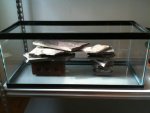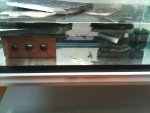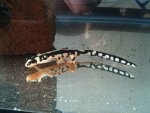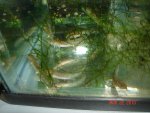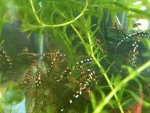Neotenic_Jaymes
Active member
Today I spent time with a close friend of mine and we put together a 20 gallon tank for his 1.1. adult kaiseri. We had the idea that his adult N. kaiseri wanted more land surface so we needed to set up a new tank. We roughly spent 2 hours getting the slat rocks, water, filter, and everything together. I took some rather decent photos of the whole thing enjoy.
The newts seem to like their new home.
The newts seem to like their new home.

